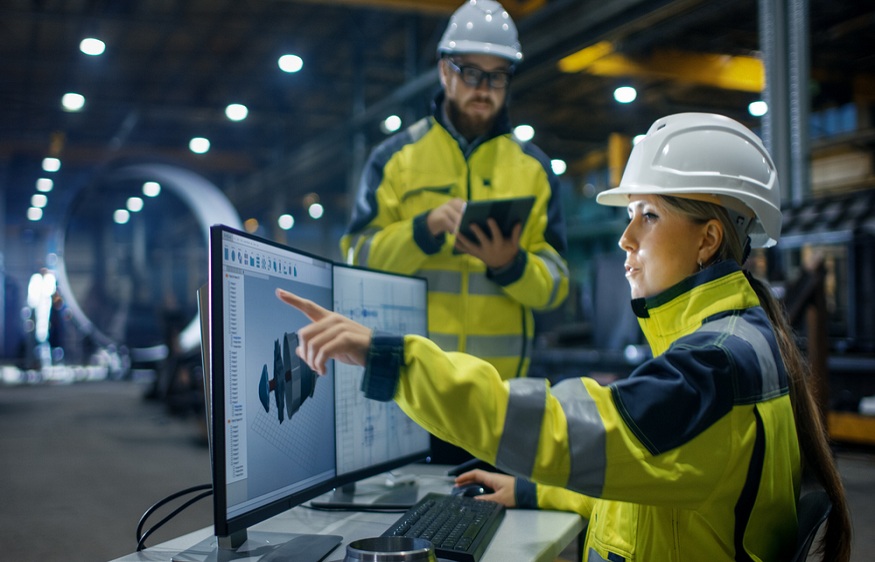Explore the construction innovations shaping the future of construction, with technologies like BIM, artificial intelligence, and more.
Construction sites in the age of technology
Today’s construction sites are no longer limited to traditional methods; they are now the scene of technological innovations that are revolutionizing the way we build. From connected tools to advanced software, these new technologies are boosting efficiency and precision on the ground. The emergence of drones, for example, offers a new perspective on construction sites. They allow for faster and more accurate topographic surveys, and help monitor the progress of work, thus optimizing time and resources. Similarly, augmented reality techniques allow architectural projects to be visualized in real time in their environment, facilitating decision-making and collaboration between different stakeholders. But it’s not just the tools that have evolved. Digital platforms such as BIM (Building Information Modeling) are transforming the way professionals share and manage information throughout the phases of the project.
The cognitive revolution of construction sites
The impact of artificial intelligence in the construction industry continues to grow, transforming construction sites into digital laboratories. Robots, drones and other intelligent devices have started to populate construction sites, bringing with them efficiency and safety. Thanks to artificial intelligence, it is now possible to predict project delays, optimize resource use and minimize human errors. In this quest for optimization, a crucial issue is also that of acoustic control on construction sites. The integration of innovative solutions for better sound management can significantly improve efficiency and comfort. This field is booming with cutting-edge tips for integrating sound into architectural designs. Acoustic control not only promotes worker well-being, but also helps raise the aesthetic standards of projects. Today’s AI models can analyze large data sets to predict the emergence of challenges in real time and propose instant solutions.
New perspectives thanks to modular construction
Modular construction is emerging as an innovative response to the current challenges of the construction industry. It provides flexibility and speed of execution that are increasingly appealing to professionals and customers. By making it possible to manufacture prefabricated elements in the factory before being assembled on site, this method considerably reduces construction time while ensuring consistent quality of materials. One of the major advantages of modular construction is its ability to adapt to various environments and needs.
Redefining materials and methods with 3D printing
3D printing, once relegated to niche areas, is now establishing itself as a central technology in the world of construction. It offers radical possibilities for customization and optimization of materials. Just as new technologies are transforming construction sites, the ability of 3D printing to create complex shapes and reduce material waste is attracting more and more attention from construction players. The major asset of 3D printing lies in its ability to work with an impressive variety of materials, ranging from classics like concrete to eco-responsible biopolymers. This not only reduces the carbon footprint of projects, but also offers more sustainable constructions. These initiatives are part of a similar perspective to that of modular construction, which is based on efficiency and durability. At the same time, traditional methods are being disrupted by this technology. Architects and engineers are now able to design prototypes at a lower cost and test innovative concepts without the usual material constraints. Virtual and augmented reality: total immersion on construction sites
The immersive impact of virtual technologies on construction sites
The construction industry is undergoing a transformation thanks to the integration of virtual and augmented technologies. These innovations are transforming construction sites into truly immersive experiences, allowing architects, engineers and clients to visualize and interact with a project before the first stone is laid.
Future trends and environmental impact
Innovation in construction doesn’t stop at new technologies or artificial intelligence. Looking to the future, the construction industry is preparing to integrate trends focused on sustainability and respect for the environment. This includes practices that are more respectful of our planet, thus aligning construction projects with the concept of sustainable development. The ecological impact of construction projects is increasingly scrutinized, pushing players in the sector to adopt ecological materials and reduce their carbon footprint. 3D printing, for example, provides a promising solution in the production of custom materials, thus limiting waste and transport. In addition, the use of modular construction, discussed above, offers opportunities for more environmentally friendly projects. Indeed, these constructions not only save time but also reduce the emissions generated by traditional methods. Finally, virtual and augmented reality open the way to more precise planning and proactive resource management, thus minimizing the environmental impact of construction sites. These technologies promote complete and integrated visibility of the project from its early stages, allowing to anticipate and correct any potential waste of resources. Future trends point towards a harmonization between technology and ecology, sustainably transforming the construction sector and paving the way for environmentally responsible construction. By adopting these innovations, the construction industry can be a major player in the change towards greener and more sustainable construction.

